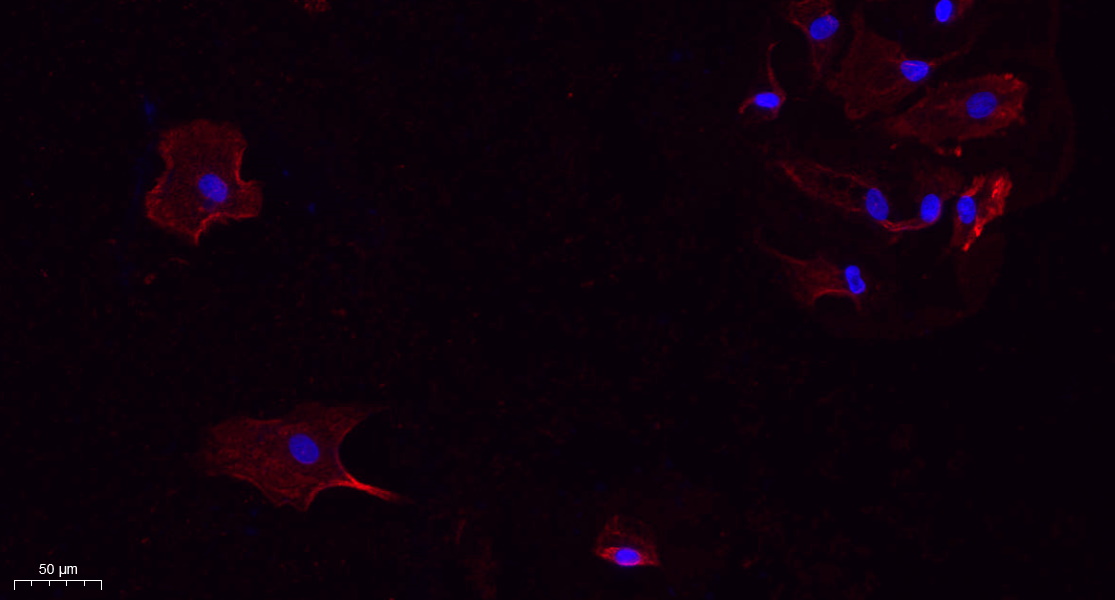Total TNFSF11 Cell-Based Colorimetric ELISA Kit
- 货号:KA4333C
- 应用:ELISA
- 种属:Human;Mouse
- 其他名称:
- Tumor necrosis factor ligand superfamily member 11 (Osteoclast differentiation factor) (ODF) (Osteoprotegerin ligand) (OPGL) (Receptor activator of nuclear factor kappa-B ligand) (RANKL) (TNF-related activation-induced cytokine) (TRANCE) (CD antigen CD254) [Cleaved into: Tumor necrosis factor ligand superfamily member 11, membrane form;Tumor necrosis factor ligand superfamily member 11, soluble form]
- 背景:
- disease:Defects in TNFSF11 are the cause of osteopetrosis autosomal recessive type 2 (OPTB2) [MIM:259710]; also known as osteoclast-poor osteopetrosis. Osteopetrosis is a rare genetic disease characterized by abnormally dense bone, due to defective resorption of immature bone. The disorder occurs in two forms: a severe autosomal recessive form occurring in utero, infancy, or childhood, and a benign autosomal dominant form occurring in adolescence or adulthood. Autosomal recessive osteopetrosis is usually associated with normal or elevated amount of non-functional osteoclasts. OPTB2 is characterized by paucity of osteoclasts, suggesting a molecular defect in osteoclast development.,function:Cytokine that binds to TNFRSF11B/OPG and to TNFRSF11A/RANK. Osteoclast differentiation and activation factor. Augments the ability of dendritic cells to stimulate naive T-cell proliferation. May be an important regulator of interactions between T-cells and dendritic cells and may play a role in the regulation of the T-cell-dependent immune response. May also play an important role in enhanced bone-resorption in humoral hypercalcemia of malignancy.,induction:Up-regulated by T-cell receptor stimulation.,PTM:The soluble form of isoform 1 derives from the membrane form by proteolytic processing (By similarity). The cleavage may be catalyzed by ADAM17.,similarity:Belongs to the tumor necrosis factor family.,subunit:Homotrimer.,tissue specificity:Highest in the peripheral lymph nodes, weak in spleen, peripheral blood Leukocytes, bone marrow, heart, placenta, skeletal muscle, stomach and thyroid.,
- 功能:
- skeletal system development, ossification, tissue homeostasis, immune system development, leukocyte differentiation,myeloid leukocyte differentiation, regulation of myeloid leukocyte differentiation, positive regulation of myeloid leukocyte differentiation, protein complex assembly, immune response, response to radiation, response to abiotic stimulus, hemopoiesis, myeloid cell differentiation, osteoclast differentiation, regulation of homeostatic process,positive regulation of homeostatic process, regulation of tissue remodeling, positive regulation of tissue remodeling,homeostatic process, macromolecular complex subunit organization, regulation of bone resorption, bone resorption,positive regulation of cell differentiation, regulation of myeloid cell differentiation, positive regulation of myeloid cell differentiation, regulation of osteoclast differentiation, positive regulation of ost
- 细胞定位:
- [Isoform 1]: Cell membrane; Single-pass type II membrane protein.; [Isoform 3]: Cell membrane; Single-pass type II membrane protein.; [Isoform 2]: Cytoplasm .; [Tumor necrosis factor ligand superfamily member 11, soluble form]: Secreted .
- 组织表达:
- Highest in the peripheral lymph nodes, weak in spleen, peripheral blood Leukocytes, bone marrow, heart, placenta, skeletal muscle, stomach and thyroid.

